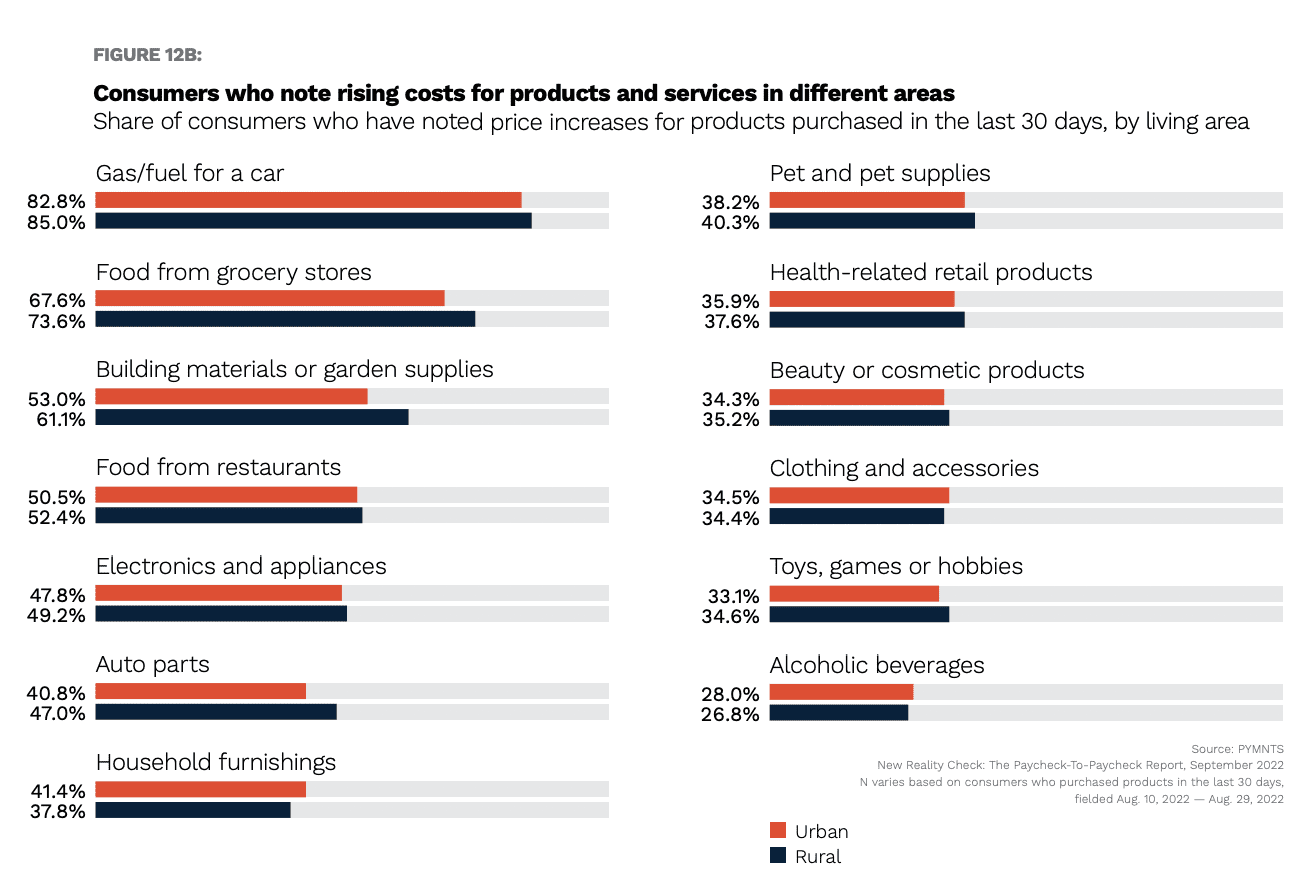
Food prices may be skyrocketing all across the country, but consumers in rural areas are feeling this inflation the most acutely by a significant margin.
By the Numbers
Research from PYMNTS’ new study, “New Reality Check: The Paycheck-To-Paycheck Report: The Inflation Edition,” created in collaboration with LendingClub, which draws from an August census-balanced survey of nearly 3,500 U.S. consumers, finds that 74% of shoppers noticed price increases for food from grocery stores in the previous 30 days. In contrast, only 68% of consumers in urban areas said the same.
See also: New Study: 60% of US Consumers Have Cut Spending Due to Inflation

The Data in Action
As groceries becomes especially difficult to afford in these rural areas, retailers are specifically looking to give consumers in these regions additional ways to purchase food in spite of these challenges.
The White House shared in a news release Wednesday (Sept. 28) that, as part of the White House Conference on Hunger, Nutrition, and Health, the National Grocers Association (NGA) is looking to double the number of retailers accepting Supplemental Nutrition Assistance Program (SNAP) Electronic Benefits Transfer (EBT) online, with a specific focus on rural areas and on places without much access to food.
“As the supermarket industry continues to evolve and innovate, NGA and our members are committed to preserving the longstanding, strong public-private partnerships with federal and state nutrition programs, and enhancing capabilities to reach and serve all Americans,” NGA President and CEO Greg Ferrara said in a statement.